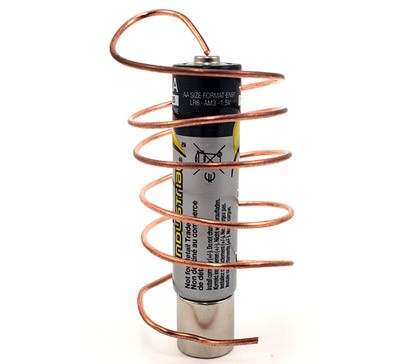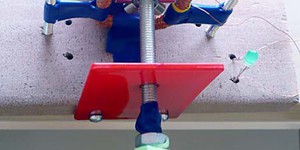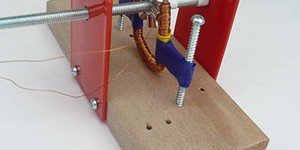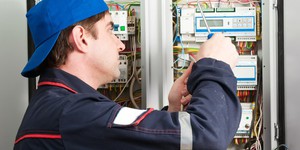Summary
Introduction
What do you need to make a motor? Not much! In this quick activity, you will make a simple motor using nothing but a battery, magnet, and a piece of wire.
Materials
- 1/2 inch diameter cylindrical neodymium magnet. The magnet should be roughly 1/2 inch long. You can also stack together multiple smaller magnets.
- 16 gauge bare copper wire (other gauges will work—the wire should be flexible enough that you can easily bend it by hand, but strong enough to hold its shape)
- Scissors or wire cutters
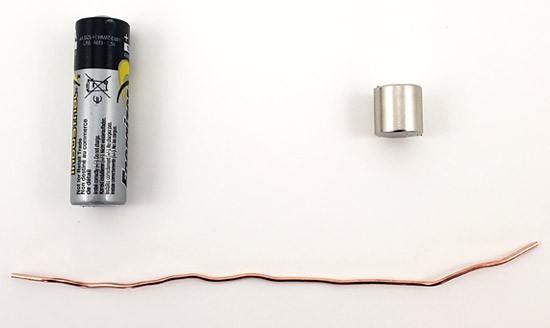 Image Credit: Ben Finio, Science Buddies / Science Buddies
Image Credit: Ben Finio, Science Buddies / Science Buddies
Disclaimer: Science Buddies participates in affiliate programs with Home Science Tools, Amazon.com, Carolina Biological, and Jameco Electronics. Proceeds from the affiliate programs help support Science Buddies, a 501(c)(3) public charity, and keep our resources free for everyone. Our top priority is student learning. If you have any comments (positive or negative) related to purchases you've made for science projects from recommendations on our site, please let us know. Write to us at scibuddy@sciencebuddies.org.
Prep Work
Instructions
Neodymium magnets are very strong. Adult supervision is recommended when using them. Do not let the magnets slam together. They may pinch your fingers or crack. Keep them away from small children, pets, credit cards, and pacemakers.
- Put the battery vertically on top of the magnet.
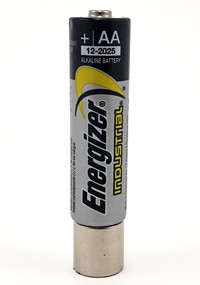 Image Credit: Ben Finio, Science Buddies / Science Buddies
Image Credit: Ben Finio, Science Buddies / Science Buddies
- Cut a piece of wire. Bend one end of it into a hook and the other end into a loop (as shown on the left below). You can also try more advanced shapes like a heart or a spiral. The goal is to have one end of the wire balance on the tip of the battery, while the other end touches the side of the magnet.
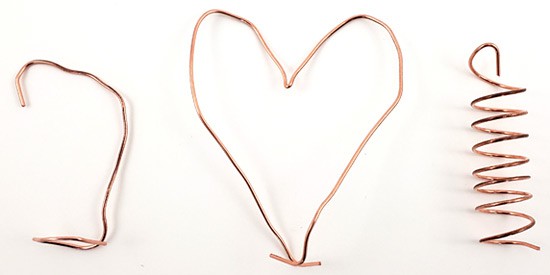 Image Credit: Ben Finio, Science Buddies / Science Buddies
Image Credit: Ben Finio, Science Buddies / Science Buddies
- Balance the piece of wire on the tip of the battery. Make sure the bottom of the wire touches the side of the magnet. If it does not, you might need to adjust the shape of the wire.
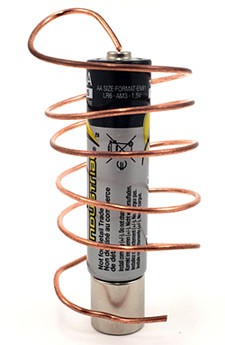 Image Credit: Ben Finio, Science Buddies / Science Buddies
Image Credit: Ben Finio, Science Buddies / Science Buddies
- Watch closely. Your wire should start spinning! If it does not spin, make sure the wire is touching both the top of the battery and the side of the magnet. If it wobbles and falls off, you might need to adjust the wire or try a different shape.What shape works the best?Which direction does the wire spin? Does the direction ever change?
What Happened?
Magnets are surrounded by an invisible magnetic field. This is what allows them to push and pull on other magnets or metal objects from a distance. In this case, the magnetic field allows the magnet to snap onto the battery. When the wire touches the top of the battery and the magnet (which is touching the bottom of the battery) at the same time, electrical current flows through the wire. This electrical current passes through the magnetic field created by the magnet. This results in a force that pushes on the wire, causing it to spin around the battery. This spinning motion means it is a simple electric motor, a device that converts electrical energy into mechanical energy. Bigger electric motors are used in things like toys, appliances, and electric cars. The motor you made in this project is called a homopolar motor because the polarity (direction) of the electrical current and magnetic field does not change.
Digging Deeper
Electrical current consists of moving electrical charges (in this case, electrons). When an electrically charged particle moves through a magnetic field, it experiences a force, called the Lorentz force. The force acts perpendicular (at a right angle) to both the direction of the magnetic field and the particle's motion. When there are a lot of charged particles moving—like electrical current flowing in a wire—the small forces add up and can get pretty big. This is how we make electric motors. The motor you built in this project was just a simple demonstration and was not very strong. You could easily stop the wire from spinning with your finger. Stronger electric motors have bigger magnets and larger coils of wire.
You can also run an electric motor in reverse to make it act as a generator. A generator requires an external force to make the wire (or sometimes the magnet) spin. As a result, it generates electric current. This is how many power plants generate electricity.
You might have noticed that your motor did not work if the wire only touched the tip of the battery but not the magnet. In order for electrical current to flow, you need a closed circuit. That means the wire needs to be touching on both ends at the same time. If it only touches on one end, you have an open circuit, and no current will flow.
Ask an Expert
For Further Exploration
- Try using a bigger battery (like a C or D cell) or a different size magnet. What happens?
- Try using different wire gauges (thicknesses). What happens?


